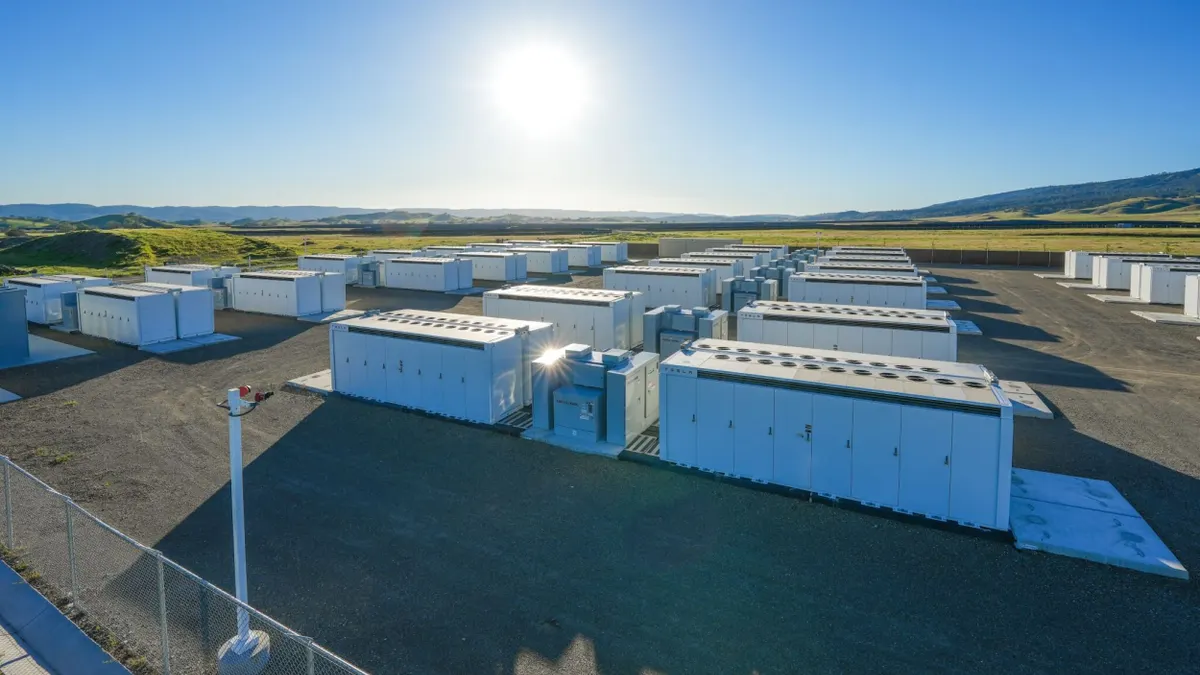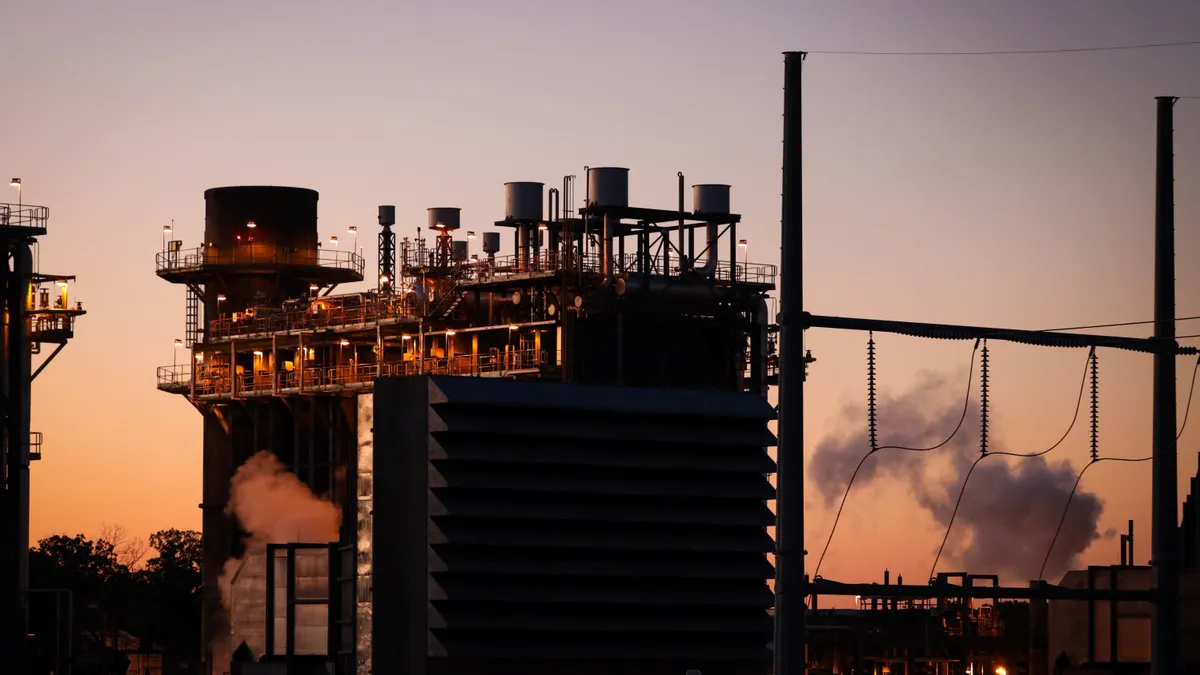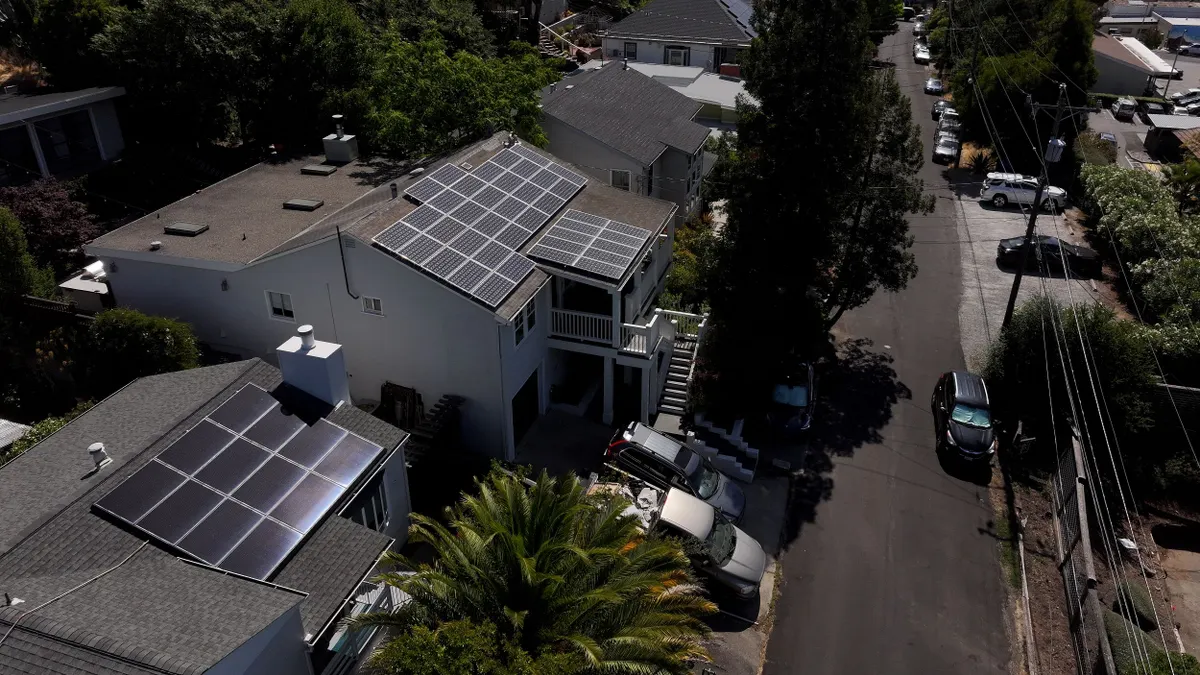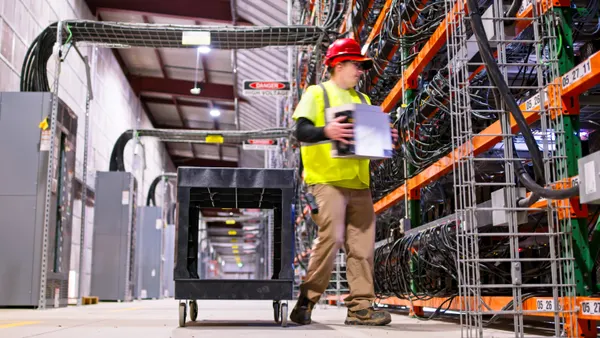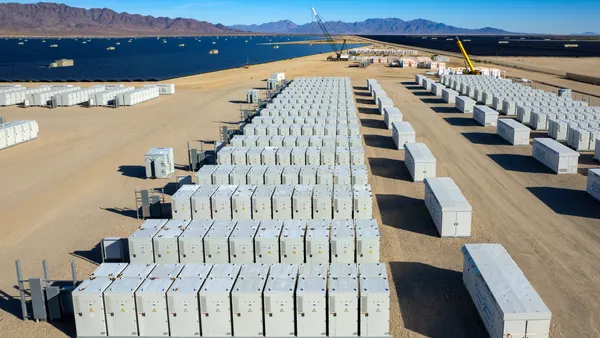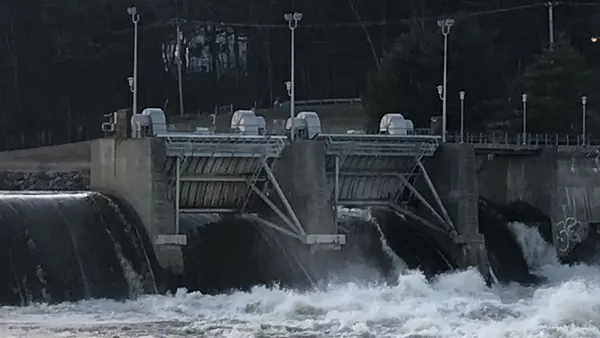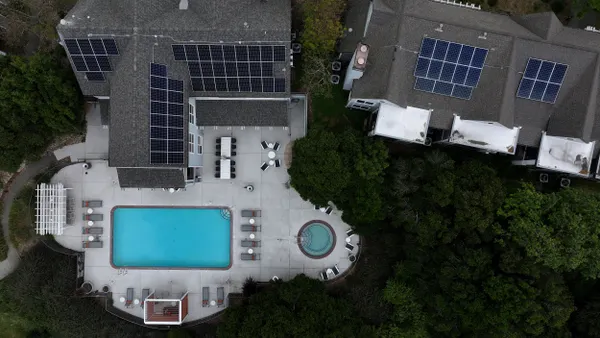Dive Brief:
- Utility-scale battery energy storage deployments hit 4.9 GW/15 GWh during the April to June quarter, rising 63% year over year and smashing the second-quarter record set in 2024, Wood Mackenzie and the American Clean Power Association said in their quarterly joint report on the U.S. energy storage business.
- Total U.S. energy deployments across the utility, residential and commercial and industrial segments hit 5.6 GW/17.8 GWh, WoodMac and ACP said — a record for any quarter.
- While 2025 is shaping up to be a banner year for energy storage, utility-scale deployments are set to decline in 2026 and likely won’t regain this year’s levels until 2029, the report said. WoodMac and ACP placed the blame on unfavorable federal policy changes, particularly around foreign battery material sourcing.
Dive Insight:
Though the U.S. energy storage market is slowly diversifying beyond the sun-drenched southern and western United States, it remains concentrated in a few key markets. California, Texas and Arizona accounted for 75% of utility-scale capacity installed during the second quarter, WoodMac and ACP said.
Chris Taylor, founder and CEO of utility-scale storage developer GridStor, says the addition of Arizona to what was once a California-Texas storage duopoly, reflects the Grand Canyon State’s accommodating attitude toward storage.
“Arizona is more constructive [on storage] … they are looking for a way to say yes” to big projects like the 100 MW/400 MWh White Tank battery storage project GridStor acquired this month from Strata Clean Energy. GridStor aims to commission White Tank in early 2027, Taylor said.
Bullish fundamentals help, he added. Arizona is rapidly adding residents and has some of the country’s biggest announced manufacturing projects in the pipeline. Taiwan Semiconductor Manufacturing broke ground earlier this year on its third semiconductor facility in Arizona.
“Projections for load growth are not the same across the country,” Taylor said. “Arizona is toward the top.”
At the national level, WoodMac and ACP expect energy storage installations to reach 19 GW/52.5 GWh this year, then fall 12% in 2026. The groups blamed “new restrictions on equipment sourcing and ongoing global trade uncertainty” for the expected downturn.
The Republican megabill that passed in July expanded restrictions on components sourced from “foreign entities of concern” in ways that have serious implications for battery storage, analysts say. The Trump administration has also pursued an aggressive, shifting policy on tariffs.
However, demand for storage is likely to continue as the U.S. power grid faces rising load forecasts for the first time in decades. WoodMac and ACP said states with “favorable storage policy combined with expected high load growth” would be among the strongest markets for utility-scale storage over the near term.
Despite the expected downturn, the latest WoodMac/ACP forecast is clearer than the groups’ Q1 2025 outlook, which they released before the One Big Beautiful Bill Act became law.
That forecast included “high” and “low” deployment cases separated by 27 GW over five years, a nod to the major policy questions that remained unresolved at the time.
The groups’ latest report also included two sets of predictions — a “base case” and “low case” separated by 16.5 GW. The gap is due largely to lingering uncertainty over foreign sourcing requirements, broader supply-chain bottlenecks and tightening restrictions on local solar and storage permitting.
Despite those headwinds, the One Big Beautiful Bill Act’s comparatively favorable treatment for third-party owned solar and storage systems could give the residential market a lift through 2027, WoodMac and ACP said. Through 2029, their forecast calls for a 96% increase in residential storage capacity and a 41% boost in the number of installations.
Emerging ownership and financing models could support the continued growth of residential solar and storage over the next few years, investment bank Jefferies said in a Monday research note.
Jefferies nodded to Enphase’s expected rollout this fall of prepaid lease financing, which the electrical equipment manufacturer said could significantly boost uptake beginning next year. Sunrun, the United States’ largest residential solar and storage installer, has also called non-ownership financing models key to growth in a post-OBBBA world.
The relatively rosy predictions for smaller-scale energy storage add to the bullish narrative forming around distributed energy resources — like residential and commercial batteries — that utilities or third-party aggregators can network into dispatchable virtual power plants that can be deployed faster and at lower cost than other utility-scale generators.


